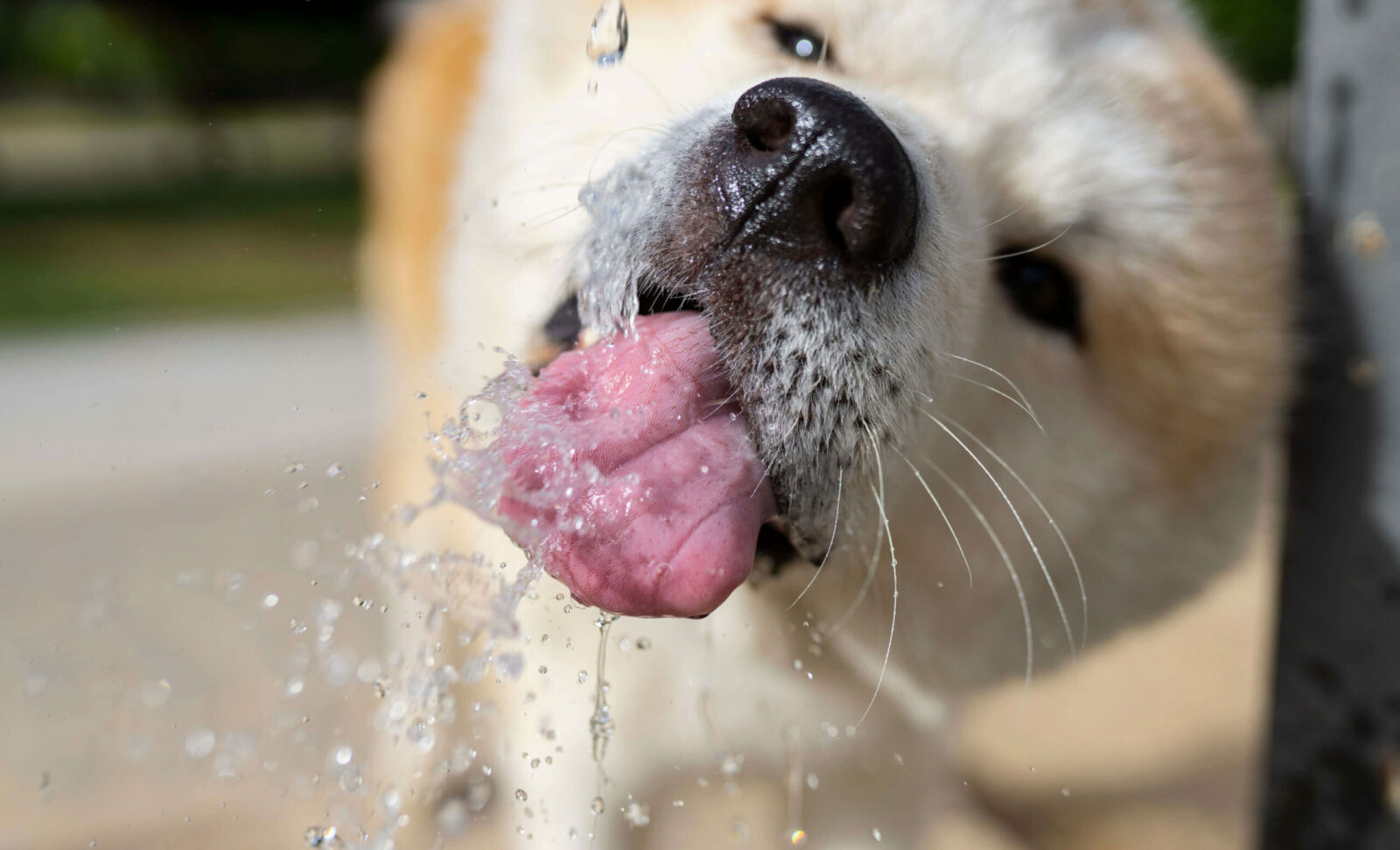Blog, Common misconceptions & FAQ's, General dog nutrition, Kidney disease, Nutrients, Senior dogs
How much water should your dog drink daily?
Updated June 2024 by Kristina Johansen
Like us, dogs need water to survive. But did you know that keeping your dog hydrated is a balancing act between water conservation and water removal? And the kidneys play a vital role in maintaining this delicate balance.
Kidney function, hydration and urine colour
When your dog is sufficiently hydrated, the kidneys go about their job as usual. However, in those instances when your dog is dehydrated (which could be for any number of reasons), the kidneys have to switch gears. They need to work harder to retain and conserve as much water as possible while still removing metabolic waste and toxins. They do this by mixing these toxins and waste with as little water as possible, meaning a large amount of toxins can be handled and excreted in a relatively small amount of water. This results in concentrated urine (darker yellow in colour).
Conversely, if your dog drinks a lot of water, the kidneys will work to remove the unnecessary/excess water as quickly as possible so as to avoid dilution of the blood. In these instances, your dog’s urine will be very dilute (clear yellow in colour).
Why water matters
On average, water makes up approximately 60% of the body weight in lean adult dogs. About two thirds of total body water is found intracellularly (within the cells), and about one third is found extracellularly (outside cells).
With the large volume of water already present inside your dog’s body it may not seem like dehydration can happen easily.
So, why is fluid so important?
Throughout the day, your dog’s body will naturally gain and lose water. Panting, sweating through the paws, urinating, and defecating all contribute to normal water loss.
To compensate for the loss, receptors in the brain are stimulated, resulting in the sensation of thirst, motivating your dog to drink the needed fluids. Consequently, water balance is maintained, and all bodily functions are able to take place as normal.
However, in those instances where your dog is not able to make up for the fluid loss, for example if they have limited access to water, the body very quickly begin to feel the consequences.
We do not yet know how much water loss a dog can tolerate before they will suffer from dehydration but research in humans suggests that even mild fluid loss of less than 3% of body weight can affect performance and cognition.
In summer, water is particularly crucial because of its role in regulating body temperature, but water has many other essential jobs in your dog’s body, such as:
- carrying nutrients and oxygen to cells
- eliminating waste from the body via faeces and urine
- protecting and lubricating internal organs and joints
- supporting the digestion of food.
So how much water should your dog drink daily?
Individual variations exist, but a general rule of thumb is that the average water requirement to ensure good hydration for a healthy adult dog is approximately 50 – 60 mLs per kilogram per day.
So, if you have a 10 kg healthy adult dog, they will need around 500 – 600 mLs per day.
Another approach suggests that daily water intake correlates with the number of daily calories consumed.
In this case, if your dog consumes 500 calories per day, their water needs are 500 mLs per day.
While drinking water is very important, the type of food your dog eats also contributes to their hydration.
Dry dog food contains very little moisture, typically less than 12% while canned dog food contains 75% moisture. The water content of fresh foods is highly variable. For example, cucumber and melon are approximately 96% water, sweet potatoes are 77% water, while a whole boiled egg is 75% water.
It is also worth noting that dogs adjust their drinking in response to changes in dietary moisture. As a result, many owners switching their dogs from moist to dry or home-prepared diets may be surprised by the associated increase or decrease in consumption of drinking water.
6 ways to encourage water intake
Some dogs won’t drink enough, even if you provide all the water they will ever need. If this is the case, you will need to step in and help. To encourage water consumption, I suggest you try these tips and ideas.
- Create several water stations around your home, inside and outside. Keep them in the same place so that your dog knows where they are. Easier access to more water should encourage extra drinking.
- Wash bowls and change the water every day so it is fresh and clean.
- Flavour the water with a small amount of low-sodium chicken broth or a drop or two of fish juice from canned fish packed in water.
- Add a little water to your dog’s food. Start with small amounts, then work your way up slowly adjusting your dog to the added water.
- Feed your dog wet or home prepared food as this contains a far higher water content.
- Have water to hand when you take them out. This is especially crucial during the summer months when your dog is more likely to get dehydrated.
Bottom line
Water is considered the nutrient most critical for survival. So, it might sound like a no-brainer, but ensuring that your dog has 24 hours access to plenty of fresh, clean water is essential to keeping their body functioning properly and feeling healthy.
If you are worried that your dog may be consuming too little – or indeed too much – water, as always, the best thing to do is to speak to your vet.

